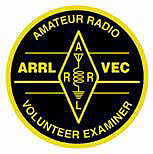APRS (Automated Packet Reporting System) is the creation of Bob Bruninga (WB4APR) . Although the primary use of APRS is for position reporting, it can also be used for communicating telemetry, short text messages, weather information, and virtually any other information that can be conveyed in short packets.
By integrating GPS APRS can be used to track vehicles, bicyclists, and even joggers. This makes it an ideal tool for EMCOMM and Public Service events.
Getting Started
You can actually get started with APRS with nothing more than a computer and internet connection. While you won't be “digipeating” or acting as an “igate” you can get a feel for how APRS works and what it does.
Visit http://www.apritch.myby.co.uk/uiv32.htm to confirm you are an amateur radio operator. You'll be given a registration number that you can then use to download a software package named “UI-VIEW” from http://www.ui-view.org/. If you go to www.ui-view.org first there will be a direct link to the registration site.
During the installation process the software will give you the option of installing it without radio interface. APRS data is then pulled from exclusively from the Internet. This allows you to get the “feel” of APRS while you work on the hardware side of things.
UI-VIEW has many enhancements, including an FCC callsign database search, weather alerts, station within range alarms, and about 30 others which are described at the ui-view.org website.
Once you are setup your station will also appear on others' UI-VIEW maps as well. If you choose to interface a weather station then they will also be available to other APRS stations. Another site of interest, FINDU.COM is available, providing a way to located virtually any APRS station by call-sign, along with any other data the station may be reporting.
Become an igate or digipeater
You can provide a valuable service to your fellow APRS users by becoming an igate. As you may recall, an igate is a station that receives APRS radio signals and delivers them to the internet for wider distribution. For this you need only a scanner or radio to receive, a TNC (terminal node controller) but no complications of wiring a transmit circuit and outbound data interface. However, you're ¾ of the way to being a digipeater by the time you've become an igate.
TNCs are relatively inexpensive and can often be purchased used for less than $50 at a hamfest. However, there is a software package called AGWPE that emulate a TNC using a sound card in your PC. Results are mixed, but with very little cost a low-end desktop or laptop can easily become an APRS igate or digipeater. The AGWPE software can be found at http://www.sv2agw.com/downloads/default.htm. There is a free and premium version, the free one being more than adequate for getting started.
By loading the AGWPE software and the UI-VIEW software on a computer with internet access all you need to do is run the audio from your radio or scanner to the line-in jack, perhaps through a resister to attenuate the level, and you're an igate. At this point you'll be relaying radio APRS packets to the world!
Becoming a digipeater is a little more complex. You'll need to purchase or build a cable that will take the audio out from your TNC or sound card to the radio's MIC jack as well as provide a PTT signal so your radio can transmit packets. However, prefabricated cables for most radios are available for a reasonable cost if you're not up to doing it yourself.




